Bauska castle
 The Bauska Castle is located in a picturesque place – on a spit near the confluence of the Musa and Memele rivers. Here, since ancient times (according to archaeologists, 3,500 years ago) settled on the banks of the three largest Zemgale rivers – Lielupe, Memele and Musa. This is evidenced by the ancient settlements and burial grounds discovered during archaeological excavations. The Bau castle, formerly referred to in historical sources as Bauschkenborch, Bauskenburg, Powszke, Bawsenborg, Boske, Bowsenborch, Bauske, was built on the site of the fortified settlement of the Late Bronze Age Balts, during the reign of the Livonian Order leader Heidenreich Fink von Overberg (143950). The Livonian Order built a fortress to strengthen its power over Zemgale, protect the border with Lithuania and control the trade route from Lithuania to Riga, which Memele crossed here. The Bauska Castle was not only a fortification, but also the center of the district, from where the Vogt (administrator and judge in the possession of the Order) carried out the legal, financial and military management functions at its site.
The Bauska Castle is located in a picturesque place – on a spit near the confluence of the Musa and Memele rivers. Here, since ancient times (according to archaeologists, 3,500 years ago) settled on the banks of the three largest Zemgale rivers – Lielupe, Memele and Musa. This is evidenced by the ancient settlements and burial grounds discovered during archaeological excavations. The Bau castle, formerly referred to in historical sources as Bauschkenborch, Bauskenburg, Powszke, Bawsenborg, Boske, Bowsenborch, Bauske, was built on the site of the fortified settlement of the Late Bronze Age Balts, during the reign of the Livonian Order leader Heidenreich Fink von Overberg (143950). The Livonian Order built a fortress to strengthen its power over Zemgale, protect the border with Lithuania and control the trade route from Lithuania to Riga, which Memele crossed here. The Bauska Castle was not only a fortification, but also the center of the district, from where the Vogt (administrator and judge in the possession of the Order) carried out the legal, financial and military management functions at its site.
The reasons for the construction of the castle in this place were very serious. In the battle of Grunwald in 1410, the Teutonic Order was defeated, the “branch” of which was the Livonian Order, which also settled in Latvia and Estonia, which also suffered losses, intervening in a dispute over the princely throne in Lithuania. The decisive battle took place on September 1, 1435 near the Šventoji River, in which the order suffered the largest defeat in its history (even more devastating than the Battle of Ice in 1242 and the Battle of Durba in 1260). The master of the Livonian Order of Kersdorf also died in it. Since then, Lithuanian troops began to harass Livonia, its metropolis of Riga was only two cavalry crossings from the Lithuanian border. To protect the Lithuanian direction, it was decided to erect a new fortress at the confluence of the Musa and Memele rivers, where the main road to Riga passed.
The first known mention of the construction of the Bauska fortress was found in a letter from the Order Master Heidenreich Fink von Overberg to the Revel (Tallinn) Town Hall, dated 1443. What does Tallinn have to do with it? Because there was no one to build the castle – the region around Bauska was devastated by wars, the smallpox survivors “thinned out” the epidemic of smallpox. The entire southern outskirts of the central part of Latvia was depopulated, and at least five hundred builders were needed to build the castle. It was decided to go to Russia and drive the inhabitants from there. Veliky Novgorod was at enmity with Moscow at that time and did not have the strength to fully protect its western border. The knights invaded the poor, but densely populated part of the possessions of Novgorodians near the town of Yamm. The prisoners turned out to be not Russian, but Ugro-Finns from the Votov tribe, partly Finns, partly Slavs. As a result, the fortress was not only erected, but the Latvian population again made a noise in the empty land.
It is believed that the construction of the Order Castell was completed in 1451. Near the castle, on the peninsula formed by the sediments of the Memele and Musa rivers, a small settlement of artisans and fishermen arose, called Schildburg, which was already liquidated in 1584 by order of the Kurzeme Duke Gotthard Ketler’s. Vairogmiests is first mentioned in documents in 1518 under the name Bauska. There was also a church, a school building and an inn. According to linguists, the name of the town came either from the word bauska – bad meadow, or from the word bauze – head, top of a hill.
The Vogt residence was built taking into account the terrain according to a peculiar planning system: the towers are not located at the corners, as usual, but in the middle of the fortress walls, the thickness of the sections of the walls that are vulnerable to siege is twice the thickness of the others, the gates are sandwiched between two tall semicircular towers of different diameters. Until 1495, the castle was subordinate to the Jelgava (Mitava) Komtur.
During the Livonian War in Vilnius on August 31, 1559, a defense treaty was signed, which was signed by the Master of the Livonian Order Gotthard Ketler and Polish Chancellor Nikolai Radziwill. Under this agreement, the Polish state promised to place an army at the disposal of the Livonian Order to fight Russia. As a payment for assistance, the Livonian Order was to temporarily transfer to Poland several border regions and fortresses. The Bauska fortress was transferred to the governor of the Polish king in December 1559.
The most famous in history is the last vogue of Bauska Heinrich (Indrikis) von Galen, who, together with Landmarshal Schall von Bell of Sigulda, his brother Komtur Kuldigi and Christoph von Sieberg, Vogt Kandava, in 1560 gathered the remnants of their troops and fought the Russian troops near Ermes (Ergem). An attempt to confront a stronger enemy ended in the defeat of the knights, they lost more than 500 people killed.
In 1561, the last Riga archbishop Wilhelm of Brandenburg in exchange for a castle in Koknese received the Bauska fortress from the Poles. On March 3, 1562, the Livonian Order was abolished, and its last master Gotthard Ketler became the Duke of Kurzeme and Zemgale, swearing allegiance to the Polish king Sigismund II Augustus. At the end of the year, the castle was transferred to the personal property of the duke. In 1568, the Duke convened the 2nd Courland Landtag in the Bauska Fortress, where, by the way, it was decided that the Landtags would be held in Mitava (Jelgava) in winter and in Bauska in summer. The landtags of the Duchy of Courland of 1568, 1590, 1601 and later passed here.
According to Balthazar Russov’s chronicle, the Duke Magnus was in negotiations during the Livonian War in Bauska: “In order to end the king’s business and get rid of the reckoning with Ivan the Terrible, the Duke Magnus secretly left his wife from Oberpalen [now Põltsamaa in Estonia] in Pilten. From here he In 1578 he arrived in Bauska, where he entered into negotiations with Prince Nicholas Radzivil, governor of Vilnius and the Lithuanian Hetman. The negotiations ended in 1579 with the fact that the Duke Magnus gave all his possessions with the bishopric of Piltene under the protection of Lithuania, however,the rights of his brother, the king of Denmark, are “. And three years later, on January 15, 1582, the Livonian War ended in a peace treaty in Zapolye.
At the same time, they began to build a new Bauska castle instead of the eastern forburg of the old fortress. After the death of Gotthard in 1587, the courtyard and the Chancellery of the Duchy moved to Bauska Castle and stayed here until 1596, which is considered the year the castle was completed, as evidenced by the stone relief found in the ruins with the inscription “Soli Deo Gloria Anno 1596”.
This year (1596), as envisaged in the testament of the Duke of Gotthard, an act on the division of the duchy between the sons of the old duke, Frederick and William, was signed in the castle of Kalnamuiza in the town of Tervet. Duke Frederick, together with the court, moved to Jelgava. In 1605, the Landtag assembled in Bauska for the last time.
It is believed that the status of the city of Bauska received in 1609, when the Duke of Frederick assigned the city a coat of arms with a lion.
In 1621, at the beginning of the Polish-Swedish war, the Swedish army occupied Riga and Jelgava. The court of Duke Friedrich Ketler was temporarily housed in the Bauska Castle, where he remained until 1624. In 1625, the Swedish army, coming from Lithuania, surrounded the Bauska Castle and managed to take it, thanks to the betrayal of a local burgher. The Bauska Castle was the first captured by the Swedish king Gustav II Adolf in a battle under his personal command. The Swedes remained in the castle until 1628, when the Polish commander Alexander Gonsevsky managed to force them to leave the castle without a fight.
On August 16, 1642, Duke Frederick died, and the throne was taken by the son of his brother Wilhelm – Jekab. In 1658, the Swedish army again invaded Zemgale and occupied Jelgava, captured the duke’s family and forced to transfer the Bausky and Dobele castles to the Swedes. To return the Bauska Castle, the Polish commander Alexander Polubinsky besieged him several times, but failed to take it. The Swedish army left the ruined castle after the signing of the Olivian Peace in 1660. During the war, the castle was badly destroyed.
In 1700, Russian Tsar Peter I and King of Poland Augustus the Strong arrived in Bauska. There is a legend that both monarchs had breakfast together on a large stone, which still lies on the corner of Kalnu and Rupnieitsibas streets. At the beginning of the Northern War, the Swedish army conquered Bauska Castle in 1701. In Frauenburg (now Saldus), on August 23, 1701, the Swedish king signed an order to build fortifications in Bauska. Major General Carl Magnus Stewart was commissioned to prepare a plan for new earthen fortifications. Extensive reconstruction work has begun. At the end of August 1705, units of the Russian army captured the whole of Courland. On September 14, the Swedish garrison of the castle surrendered to the Russians without a fight. In March 1706, the Russian Tsar Peter I ordered his generals to level the Jelgava and Bau fortifications with the land. The explosions affected mainly the bastions and earthen ramparts, as well as the southern part of the new castle.
After the Northern War, the Duke Ferdinand Ketler in Kurzeme never returned. In the years 1710-11. The Great Plague also raged in Bauska, where one third of the inhabitants died out. The surviving residents of the city secretly began to dismantle the ruins of the castle for their household needs. At the end of the 18th century, during the uprising of Tadeusz Kosciuszko, the Russian army sent to Bauska could no longer use the castle as a dwelling because it was destroyed. In 1795, when the Duchy of Courland was annexed to Russia, the Bauska County became the Bauska County of the Courland Province.
In 1812, German troops invaded Courland from Prussia conquered by Napoleon. They occupied Jelgava and Bauska (July 6), where they were from July to December. The invaders provided for the restoration of the Duchy of Courland and its annexation to Prussia. France was defeated in the war. Already in the autumn of 1812, the Prussian troops were forced to leave Courland.
Numerous traditions are associated with the castle in Bauska, as well as with others. They say, for example, that the underground plans of the castle were preserved in the Royal Library of Stockholm, indicating where the jewels of the local nobility are buried and even the duke’s golden carriage is hidden. These rumors have long worried the minds of amateur archaeologists. At the end of the XIX century. the owner of the Mezotne estate, Paul von Lieven, began excavation of a secret passage that supposedly was between the estate and the castle, but nothing is known about the search results and, most likely, this is also a legend. During the 1905 revolution, on the ruins of the Bauska Castle on October 25, the first open rally was held, which was attended by about 2,000 workers.
In 1973, work began on the restoration of part of the castle – the residence of the Dukes of Courland. Currently, visitors can explore the ramparts, the ruins of the Order Castle and climb to the observation deck in the central tower, which offers a picturesque view of the surroundings. The museum offers a tour of the ducal residence. The exhibition “The New Bauska Castle – History, Research, Restoration” is open here.
The old castle – the fortress of the Livonian Order in Bauska was erected at the confluence of the Musa and Memele rivers. The length of the castle was about 124 m, the width was 43 m, and the total area was 5230 m. Five towers were connected by a thick fortress wall, to which buildings of various sizes were attached from the inside for the needs of the garrison. The entrance was in the eastern part of the fortress between two four-story towers. Above the gate, several floors connecting the towers are built on. There was a defensive ditch with a drawbridge in front of the gate.
A large, semicircular tower, sometimes called the “Guardian of the Mountain” is adjoined from the rear by a quadrangular extension of the same height. Its premises were used together with a large tower. The first floor of the tower was covered with a cylindrical vault, and in the walls were three loopholes. On the second floor there is a magnificent four-pointed star arch in the Vogt residence. The thickness of the walls of the tower here reaches 4 m. In the north-western corner, a fireplace and a chimney have been preserved, and in the south – an exit to the dancer. The third and fourth floors of the large tower were intended for the defense of the castle. The basement under the Great Tower was used as a prison. Already in the XVI century. here was confined a political opponent of the master of the order Burchard Waldis, the author of venomous fables and epigrams.
On the north side of the gate is a smaller second tower. At the cellar level, the towers were connected by an underground passage. The second floor of the small tower was adapted for housing. Ground and upper floors, as well as superstructures above the gate, were used to protect the gate. There was a three-story building near the 1.7 meter thick fortification wall connecting the small tower with the northwest quadrangular tower. The second floor of this building was blocked by cruciform arches.
The northwestern tower was pushed to the north, this provided the north tower with flanking fire. In the middle part of the western wall, a tower with rounded corners was built. There was a cellar under the vaulted ceiling and on the first floor on three sides of the loophole. The upper part is difficult to judge – it collapsed, but is not visible in the ancient images of this tower. Between the northwestern and western towers in the fortress wall was a small gate.
In the middle part of the southern fortress wall 3.6 meters thick a quadrangular tower was built, adapted for the use of guns. This is confirmed by the chimneys in the central loophole. The shape and location of the tower indicate an early stage in the use of firearms. Further development of military art led to the placement of towers in the corners of the fortress, thus increasing the area of fire. It is difficult to judge the height of the tower. In the old drawings, it is dilapidated, but it is clearly visible that it was lower than the tower at the gate. The loopholes on the second floor of the south wall suggest that there was an extension – a building or gallery. The courtyard of the fortress was lined with slabs of raw dolomite. Drains are also made of them. In the middle of the courtyard was a well.
Initially, the fortress gates were protected by a dry moat and drawbridge over it. Behind the moat towered a log picket fence. Later, the moat fell asleep, and a forburg was built in the eastern part of the settlement. Three fortress walls and two corner towers formed a closed courtyard with gates in the south wall near the southeast tower. Inside the new fortress, separate stone buildings were added to the walls. Outside along the eastern wall was dug a moat, which was buried at the beginning of the 17th century.
The new castle is the residence of the Dukes of Courland. In the 70s. XVI century the forburg buildings of the old fortress were partially demolished in order to build the residence of the Dukes of Courland on the liberated territory. During the construction, the old fortress wall and towers were preserved. Three horseshoe-shaped two-story buildings and two towers formed a closed courtyard.
The layout of the rooms is simple – a number of rooms connected to the enfilade. On the second floor of the northern building there were premises for representation and apartments of the duke. On both floors of the eastern building – living quarters. On the lower floors of the northern and southern buildings were warehouses and utility rooms. In the southern building at the gate there is a guardhouse, on the other side of the gate, in the southeast tower there is a horse carriage. The rooms of the second floor could be reached by a narrow staircase in the wall or directly from the courtyard by an external staircase.
Judging by the materials of archives and archaeological excavations, the old fortress at that time was also used. The loopholes of the second floor of the northern wing are redone under the windows. There was a brewery and a bakery on the ground floor, and ammunition depots and a prison in tower cellars. At the end of the XVI century. during the construction of the new castle, new embankments were made around it, which continued to be improved until the beginning of the 18th century. The focus was on strengthening the most accessible eastern side. Until 1625, a rondelle was built around the south-eastern tower, a protective moat, two bastions and a log palisade. In the second half of the 17th century, the western side was probably strengthened and the restructuring of the eastern bastions began.
The shaft system was once again improved at the beginning of the 18th century. Under the guidance of Swedish engineers, the shafts and bastions on the east side expanded towards the city. The fortifications of the old fortress were rebuilt most of all. New earthen ramparts poured closer to the banks of both rivers, moving them away from the fortress wall. On the edges of the earthen fortifications, in front of the drawbridges, ravelins were built.
The outer staircase and the rich decoration of the interiors were partially lost in the 17th century. and finally destroyed in 1706, during the Northern War, when the castle and the palazzo were blown up. At the end of the XIX century. and in the 1930s. fragmented conservation and restoration of the castle was carried out. In 1821, the cellars of the castle were filled up by order of the Russian Tsar Alexander I, and the passages were walled up. Since 1959, extensive archaeological excavations, reconstruction, and conservation have been conducted. As a result of excavations, many findings and comprehensive information on the principles of building heating systems and furnaces of that time were obtained. In 1976, the archaeological research of the castle began (archaeologist A. Tsaune, then Grube). It is stated that before the castle on this place already in the I century. BC e. there was a fortified settlement (found ancient objects made of bone, flint and stone, fragments of clay vessels). In 1980, the reconstruction of buildings built during the reign of the Duke of Kurzeme was carried out.
In winter, the castle is closed for tourists, but here and now, construction work is in full swing. In December 2007, on New Year’s Day, laying communications through earthen ramparts, near the protective moat, builders discovered a 17th-century cannon. It is believed that it was cast at one of the iron foundries of the Kurzeme Duchy and was probably one of those guns destroyed by order of Peter the Great.
At the end of the third week of July, the castle hosts the traditional festival of ancient music. Since 1990, the castle has housed a museum, the opening hours of which are from May 1 to November 1 daily from 9:00 to 19:00. Beginning in the fall of 2008, it will be possible to get acquainted with the life and customs of the era of Mannerism in the halls of the New Palace by visiting the Duke of Gotard Kettler and his wife Anna, a Kurzeme. One of the museum halls is entirely devoted to dolls. A doll house with several floors, a whole collection assembled by the artist Tamara Chudnovskaya, and souvenir dolls that have been brought to the museum from many corners of the world by its employees for many years. Museum contact information in the castle.
The legend of Bauska Castle
Exactly at midnight, the master who once erected its walls rises to the tower of the Bauska Castle and continues to work. If you believe the local legend, many centuries ago a mason was buried near the castle, and his spirit still can’t put up with the fact that his hands were destroyed by wars … Two more ghosts appear near the castle – the guards who overslept the enemy at the castle gates. At night, they return to the place where the bridge leading to the castle was, and try to cut it so that the enemy does not pass. For several centuries everyone has been sawing and sawing …

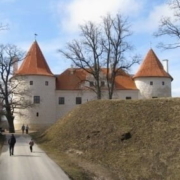

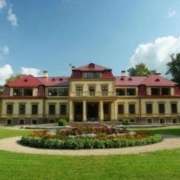
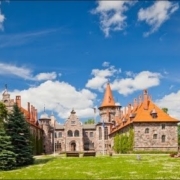


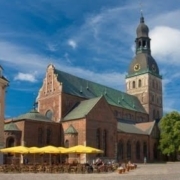
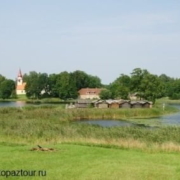



Leave a Reply
Want to join the discussion?Feel free to contribute!